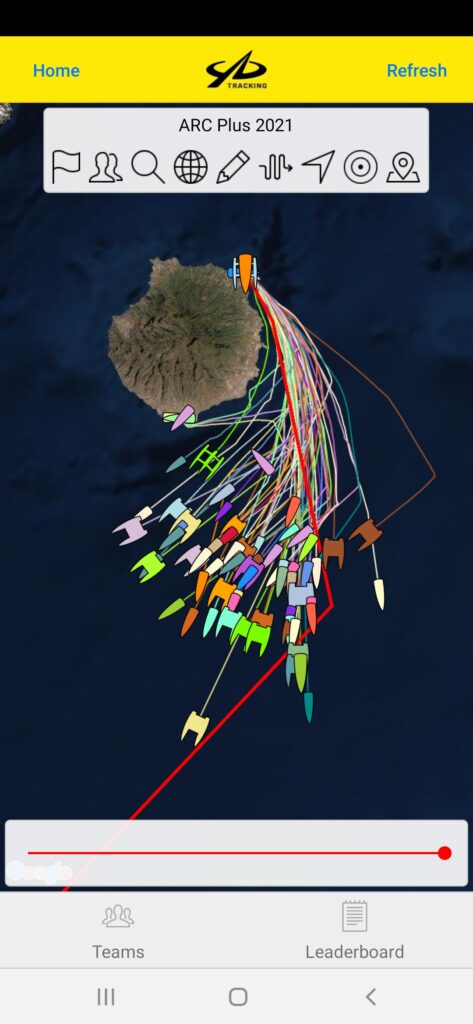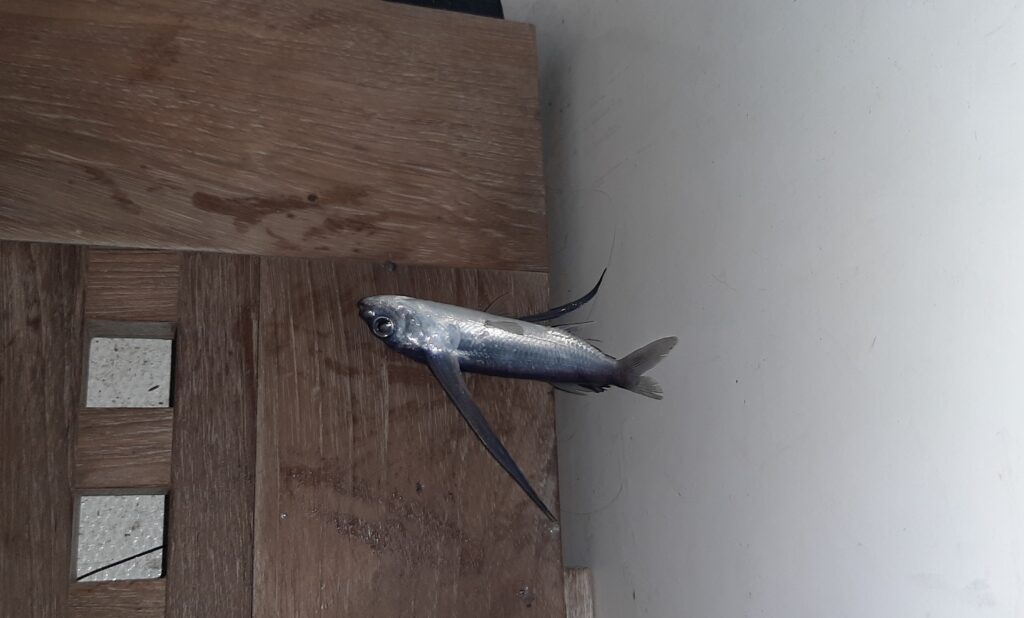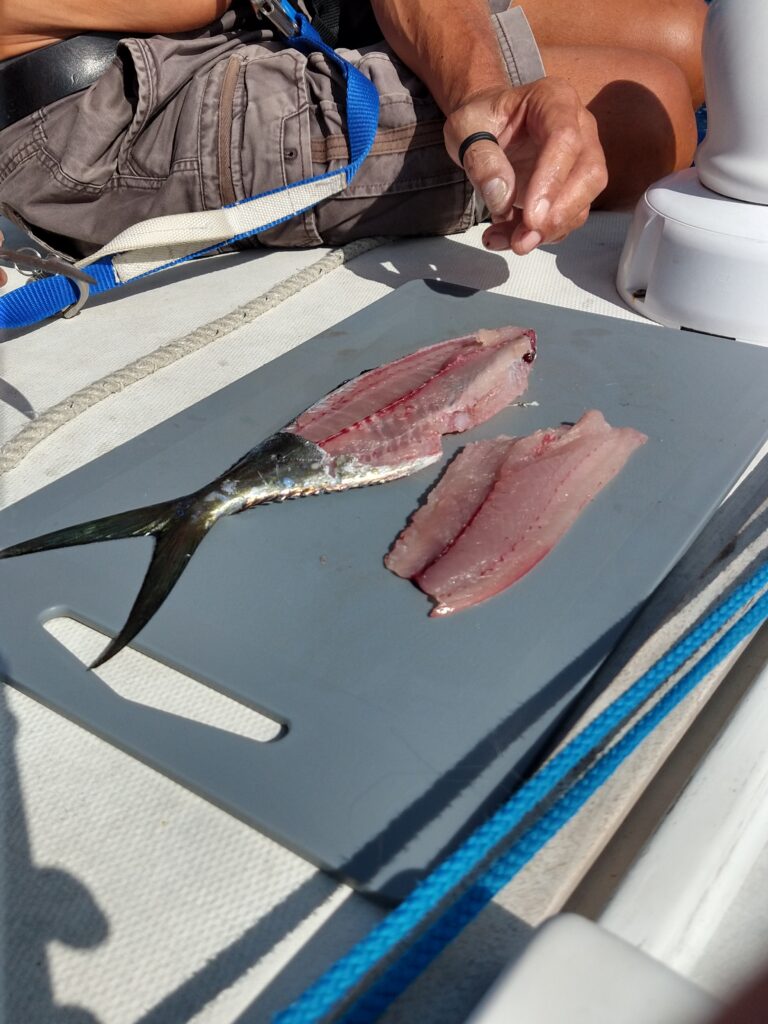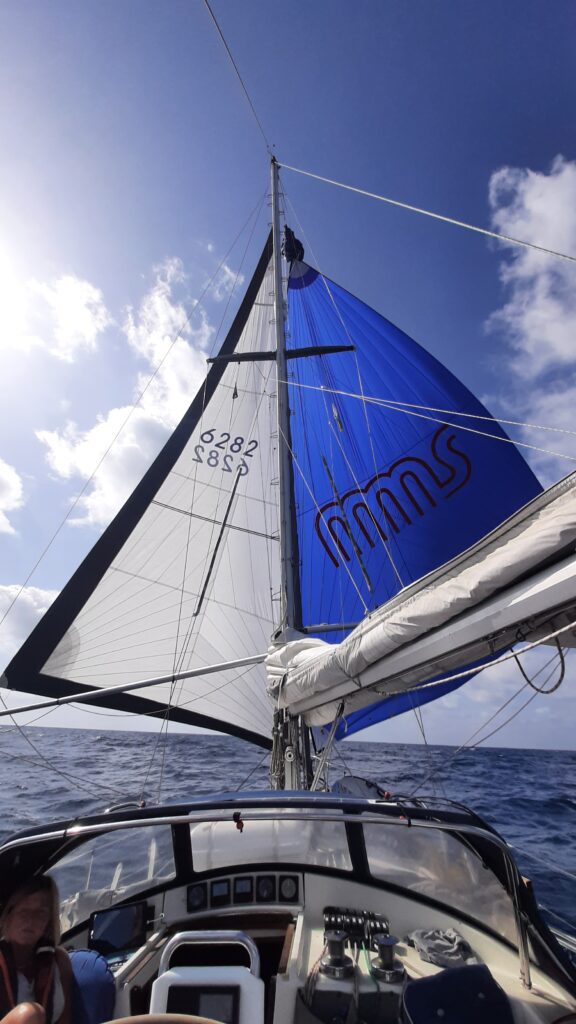We stayed a bit longer in Gran Canaria than planned, also because we had to wait until our third future member Ingo had flown in. We expect the long crossings to be less difficult with the three of us.
The boats of the ARC+ have now found themselves in Las Palmas. We visited Las Palmas to check them out and it was very busy. The water sports shops did very well with all those boats that had to buy all kinds of stuff at the last minute (we also bought some extra hardware and an extra solar panel to help keep the batteries full, although we did not buy it at the water sports jeweler but in Las Palmas itself). The departure of the ARC+ took place on November 7. Their tracker app showed the whole tangle of boats (more than 70 of them) heading to the Cape Verdes as well. It was quite windy that day, so things got a little rough, especially in the acceleration zones.
We left a day later, from Pasito Blanco. That day also, some wind was predicted, so we left with the second reef in and the (small) inner jib. A bit of a strange sight: reefed so small while we sail in the wind shadow of the island where there is virtually no wind and we chug away on the engine. But not long after that you can already see the wind zone approaching in the distance and eventually we reach it and get about 25 knots again so things are once again a bit rough.
So Ingo was given a bit of a baptism of fire. He had soon made a new close friend on board: our blue bucket. They were inseparable for two days. Apparently the plaster also took a while to do its job. It must be said that he has performed his shifts without murmuring, even at night. So cheers!
Sailing at night when it is a bit rough still remains a bit creepy, especially when there is no moon and therefore very dark. It’s like sitting in a fully-blinded taxi with a completely drunk driver speeding over a motocross track. And you just hope it goes well…
Fortunately, after those two days, things got better, and the wind and the sea also became calmer. At one point there was even talk of “champagne sailing”: a nice back stay wind, few waves, blue water, sunshine, i.e. delicious. That’s another way to do it!
Ingo had also been looking forward to seeing dolphins. And not just in the distance, but close to the boat for a longer period of time. When at one point I heard another “Pssht” next to the boat to indicate that something was swimming nearby again, I nudged Ingo to take a quick look. When I took a good look myself, I saw that these weren’t dolphins. And no whales either for that matter. No, these were g*ddamn killer whales!! You know, those animals we talked about before that around the Spanish and Portuguese coasts have gone beserk and devoted themselves to attacking and stripping sailboats like ours from their rudders…..
It raises the highest alarm phase if you see such a beast on the port side a meter next to your boat and it then dives towards the bottom and the stern of the boat (where the rudder is, yes). When one then also shows up on starboard that is even closer (at “cuddle distance”) and also dives towards the transom, all the advice goes through my head again: what to do in case of an killer whale attack (engine off/sails down, loosen the rudder, take pictures of their dorsal fins for identification, don’t interact with them, stay out of their sight, warn the authorities (in the middle of the ocean??) and then wait for it to be over…). However, nothing happens. The killer whales reappear about 50 meters behind the boat, stay there for a while (we count about 5) and then don’t show themselves anymore. Pfff, at ease …. So that’s another way to do it….
A day later, Ingo’s wish was more than fulfilled. In the middle of the day we saw some dolphins approaching the boat. And before we knew it we saw more than 50 of them coming towards the boat from all sides. It seemed as if they had agreed on it. They stayed with us for more than an hour, alternating who could swim next to and in front of the boat and show their skills. It was beautiful.
Other sea life we saw were sea turtles and schools of flying fish. The latter are by the way quite night blind because during the night watch one regularly ended up in the cockpit. A bit of a shock when you suddenly hear “boom-pats-flap-flap-flap-…” next to you in the pitch dark. Also, Sepias (kind of squid) are not very smart. They are frequently washed on board. By the time you notice them, they are usually dead and quite dehydrated.
We also tried our new fishing tackle for the first time. Just a line and a plastic bright red or blue piece of plastic bait that should resemble some kind of squid in the distance. Within half an hour we had one: a Mahi-Mahi (Dorade). Not very big, but just enough for a sashimi snack. It was very tasty and it doesn’t get any fresher than that.
The wind let down a bit towards the end and we regularly had to turn the engine on to maintain some speed. After 6.5 days and almost 800 miles, the redeeming “land in sight” came: we had reached Cape Verde….





